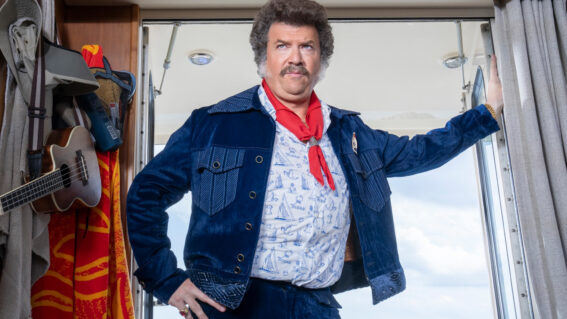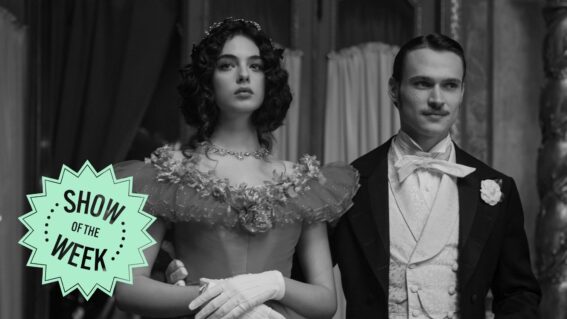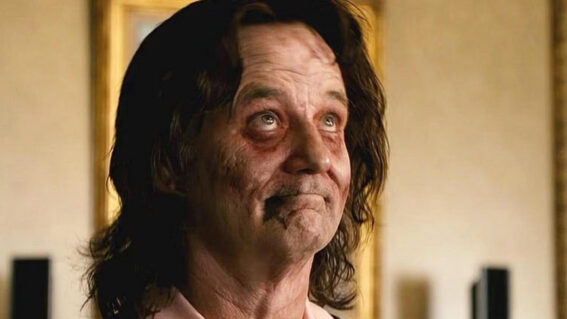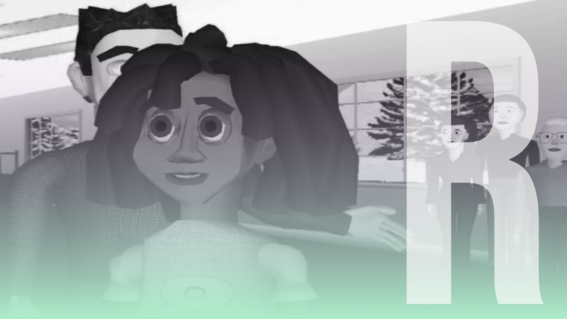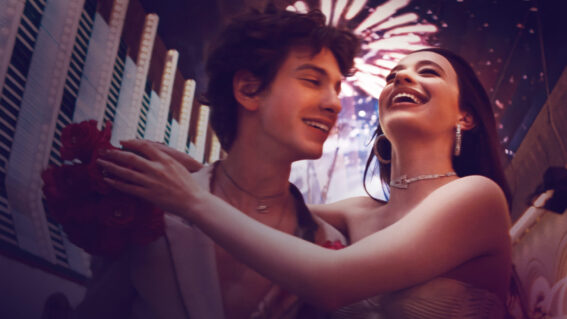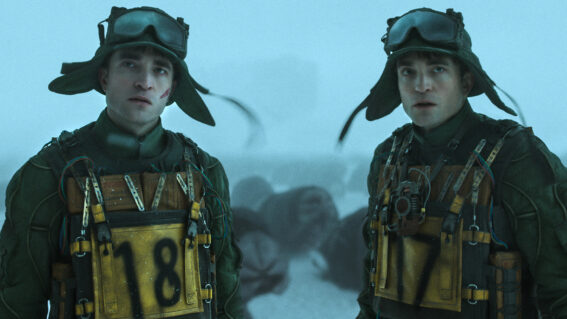BRIDE OF THE RETURN OF THE CLASH OF THE REMAKES!
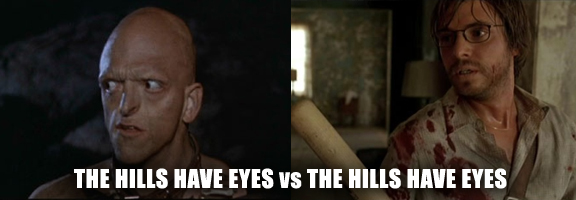
This article is epic.
No, I’m not joking. Seriously. Go make a cup of tea and a sandwich. You’ll need it.
Some of you may recall my previous article entitled “CLASH OF THE REMAKES” (click the link to see it) where I took a pithy look at the quality of a remake compared to its original, irrespective of how obscure or popular they were. I had also promised to return and bring forth more such battles out of the film chest and thus, in the tradition of all good sequels, the body count has to be higher, the production values have to be bigger and the stakes have to go through the roof. As such, what you are about to witness is the Mother Of All Original-Remake Battles pretty much laying down every remake-and-original I’ve ever seen (to the best of my memory can cough up).
It’s huge, it’s lengthy and it’s a hell of a cool ride.
Enter with caution.
AGAIN – the usual disclaimers apply:
1) This is not a comprehensive list, it’s merely every remake-and-original that I have personally seen. This only represents less than 10% of the actual remakes out there.
2) I’m not doing television-remakes or straight-to-DVD remakes, I’m sticking to the theatrically-aimed feature films only. Ditto I’m not doing feature-film adaptations of TV shows or anything like that.
3) If you really hate remakes, this article may horrify you.
On with the showdown!
A Nightmare On Elm Street (1984) vs A Nightmare on Elm Street (2010) – While James Bond has had a plethora of actors portray him on the screen, the notion of 80’s horror icon Freddy Krueger being played by anyone other than Robert Englund really shakes up the core of many horror fans. First time movie-director, long-time music video maker, Samuel Bayer goes head to head with a big-budget remake of Wes Craven’s seminal, low-budget, classic that redefined the slasher and supernatural horror genre. Bayer has money, Craven has his wits, Bayer has people in their thirties pretending to be teenagers, Craven has actual teenagers including a Figwit-esque Johnny Depp, Bayer has Jackie Earl Haley, Craven has the original Robert Englund, Bayer’s film is witless, formulaic and glitzy, Craven’s film has visibly aged, but is still a testament to low-fi, cutting-edge, filmmaking. Sorry Bayer, there’s absolutely no comparison and the box-office and critics agree: the original Nightmare On Elm Street is a dazzling (if very dated) king and the remake is just a B-grade cash-in made of stupid.
The Hills Have Eyes (1977) vs The Hills Have Eyes (2006) – Another big-budget remake of a Wes Craven ‘classic’ and this time the critics and box-office tables have turned. All of director Alexander Aja’s Hollywood films have been remakes, starting with this extremely violent take on Craven’s story of radiation-infused, cannibal hillbillies. Craven’s film was famous for its grim and violent content, but Aja here turns the cruelty factor to 11 with some genuinely grisly deaths, unsettling rapes, disturbing visual imagery and a huge production budget allowing for some iconic and atmospheric set-pieces. If the term was around today, Aja’s film would definitely trump Craven’s original as a far more horrific ‘video nasty’ and certainly offers a solid, if uneven, display of graphic violence against humans. Not my kind of entertainment, but plenty of stomach-turning gristle and sexual violation for anyone who hunkers for something with a bit more concept and story than your usual torture porn. Remake wins.
The Italian Job (1969) vs The Italian Job (2003) – If ever there was a clash between Hollywood and English sensibilities in film-making, the battle between these two films certainly would epitomize it. The original UK film – dubbed by many as a classic – stars Michael Caine, Benny Hill and features photography by future Indiana Jones cinematographer Douglas Slocombe and music by Quincey Jones. The remake is as slick and speedy as any Hollywood actioner could hope to be, starring Mark Wahlberg, Jason Statham, Charlize Theron and Edward Norton being all mustachioed and dastardly evil with F. Gary Gray (one of Hollywood’s few African American studio genre directors) at the helm. The differences are split down the middle, the UK original is smart, witty, biting with satire and not afraid to get a little black and pithy while the US remake goes for production value, astonishing stunts, intensive star-power and a lot of thrill-ride, feel-good, adrenaline rush material. In short…both films are actually awesome, a rare case where a remake stands on its own as a fun and solid film without stepping on the remakes toes. So which is better? I can only bring my personal take on this and I prefer the remake purely on the fact that, as a remake, it stands and delivers as a self-sustaining film that doesn’t need the original support it. Close and I’m sure you’ll disagree, but remake wins for me.
The Private War Of Major Benson (1955) vs Major Payne (1995) – Ha! Bet you didn’t know a Damon Wayans film could possibly be a remake, but apparently it is. Wayans steps in the shoes once worn by Mr Charlton Heston himself (funny how he keeps cropping up eh?), both playing army drill sergeants with severe interpersonal issues that land them jobs trying to teach a ragtag team of terrified young boys the importance of discipline and self-esteem. Both films turn out to be quite forgettable but, forced to decide between the two bland, play-to-the-audience, lowest-common-denominator films, Major Payne wins for me because of Wayans strikingly memorable performance as a truly, truly, strange and weird character (with his notable squeaky high-pitch delivery) who is then grounded by a surprisingly strong third-act development that admits to the audience that he actually is a severely troubled individual himself with his own self-esteem issues. Ha! Bet you can’t believe a Damon Wayans film actually has character development either! It’s an unfair fight, but Wayans’ remake beats Heston’s original hands-down-flat.
The Thomas Crown Affair (1968) vs The Thomas Crown Affair (1999) – another one of those pesky situations where an original and a remake are both notably strong films. The original – starring the unbelievably cool Steve MacQueen and Faye Dunaway – was a hip, fast and cool Hollywood heist film that incorporated the most cutting edge of 60’s art, fashion, cinema and music and is a genuine artifact of its age. The remake, helmed by then-still-awesome-director John McTiernan, doesn’t feature a cast as genuinely cool (Rene Russo? Really?), but makes up for it with slick execution, a grin-causing script and all the giggly, giddy, clever fun that any good heist film should be. You can’t really go wrong with either film depending on what you’re in the mood for, but ultimately if a decision has to be made then I would choose for cutting edge against solid filmmaking (plus Steve MacQueen could beat Pierce Brosnan into a pulp) and go with the original. Another very close tie, but your verdict may be different from mine.
The Poseidon Adventure (1972) vs Poseidon (2006) – in the tradition of famous foreign directors gone to seed in Hollywood, Wolfgang Petersen’s big dumb remake of the classic 70’s disaster/survival movie proves that modern filmmaking can, in fact, be more stupid and irritating than classic filmmaking. The original Irwin Allen story of cruise-liner passengers trying to escape their capsized ship was designed, specifically, to be a big, dumb, thrill-ride and yet the Oscar-worthy lineup of Gene Hackman, Ernest Borgnine and Roddy McDowell act circles around the insipid, annoying-young-people-whom-everyone-hates-cast of the remake. Compared to the silly, but memorable original blockbuster, Petersen’s remake feels half-assed with an asinine story, ridiculous movie-logic, highly dubious visual FX and terrible cast performances. No contest, the original is all you ever need to see.
Rollerball (1975) vs Rollerball (2002) – Known as the film that ended director John McTiernan’s (Die Hard, Predator, Hunt For Red October, The Thomas Crown Affair) career, the remake of the James Caan cult-classic dystopian sci-fi film proved to be a disaster for almost everyone who was involved with it. There’s not much to be said about the original which is mostly a strange and rather fascinating artifact of 1970’s science-fiction that focuses on a doomsday world where a violent and deadly version of roller-derby (*ahem*) is the most popular sport around – all based on a famous short story that appeared in Esquire magazine. Having said all that, the remake is known as one of the worst studio-films in cinematic history and is an inept and poorly executed mishmash of crap thrash metal, skateboards, motorcross and a eye-rolling collision of bad-ass-muther-fuckery and boobies. Worst of all, it’s BORING…absolutely, mind-rapingly, dull beyond all imagination. You can’t even laugh at how bad it is. McTiernan’s career never really recovered from this remake and for very good reason…the original is the only version worth remembering.
The Omen (1976) vs The Omen (2006) – I hadn’t seen either film before writing up this article and thought I’d give them both a go. My first thoughts as I rented the DVDs from the store was: “hmmm…one is made by the director of Superman, Lethal Weapon and The Goonies. The other is by the director of a really bad Owen Wilson action movie and Max Payne.” Suffice it to say, the odds were stacked up against the remake and let’s just say the final results did not come as a surprise. The original film holds up surprisingly well and still packs some nasty scares plus some rather atmospheric storytelling about the legend of the Antichrist…the remake tries to outdo the original by cranking up the scare-music louder and flashing more gore and jump-cuts, but really it’s the story that makes you care about a film and the story for the remake is nothing more than a place-holder. Sorry, but when you’re going toe-to-toe against Richard freaking Donner, you’ve gotta do better than this. The original wins by a country mile.
Dawn of the Dead (1978) vs Dawn of the Dead (2004) – Hmmm…dammit another toughie. The original was Romero’s commercial coupe that brought zombies into the mainstream cultural context, following from his original Night Of The Living Dead. Zack Snyder’s remake did the same, taking Danny Boyle’s awesome not-quite-a-zombie-film-but-better-than-most-zombie-films 28 Days Later and launching Hollywood and America’s obsession with the walking dead. Both films are touched with wry post-modern humor and unbelievable bleakness and gore, both are solid films which hold up as stand-alone statements, both get under your skin and stick in your head long after the credits roll. On the flaws, the original was a cheap film to begin with and has dated severely with time…the remake has some low and dull points and a third act that sinks into bad movie-logic and unappealing filler. In light of flaws, I think a dated film that was extraordinary for its time gets the gold medal against an awesome remake that trips on its feet now and then. The remake is darker, bleaker, more savage and disturbing, but the original kinda gets its point across in a novel and admirable way. Close one, but my money is on Romero’s original…now if we can just stop him from watering down with his horrid, horrid sequels.
The Time Machine (1960) vs The Time Machine (2002) – And we’re back to two rather miserable misfires: the original UK 1960 adaptation of H.G. Wells famous novel and its star-studded Hollywood remake are both films plagued with issues, but which one is worse? For the original, unlike other Welles adaptations such as The Invisible Man or War Of The Worlds, the film has dated horribly and features stiff dialogue, terrible lighting and cinematography and really only saves itself with its hokey, but sometimes interesting visual effects. The remake, almost in response to the original, is so balls-to-the-wall-over-the-top that you almost can’t take it seriously at all and the film doesn’t really address much of the logic issues that the original film has in terms of its ‘science’ that it fictionalizes. Forced to choose between the two, the real choices are between snore-inducing British drama or Hollywood hokum and I would rather watch a film than sleep through one. The remake wins by a hair.
John Carpenter’s Assault on Precinct 13 (1976) vs Assault On Precinct 13 (2005) – Director and horror-darling-boy John Carpenter has had his share of ups and downs, filming two remakes himself (one – The Thing – a cinematic masterpiece, the other – Village Of The Damned – fairly long-forgotten and uninspiring) and spawning a trilogy of remakes between 2005 and 2007. The first of these was a big-budget remake of his famous dystopian siege film about people hold up inside a derelict police precinct, battling criminal forces trying to break in. The star-studded remake alters the concept into a modern-day, real-world setting where the skeleton crew police officers of a precinct must prevent a vicious gang from rescuing their boss, held inside the precinct, during a bad snow-storm. For my part, and as much as I enjoy Carpenter’s organic and ambitious low-fi original, the remake adds a touch of cleverness and pathos with its heist concept, slicker production values and action sequences. While it doesn’t replace the original, the remake offers a lot more to be savored for a variety of different reasons. No offense to Carpenter fans, but this victory belongs to the remake.
John Carpenter’s The Fog (1980) vs The Fog (2005) – Unlike the above showdown, the other 2005 John Carpenter remake doesn’t fare so well under fine scrutiny. The Fog (no relation to the horror novel) was Carpenter’s studio-driven spook tale after the phenomenal success of his slasher-genre-creating indie original Halloween. Depicting an island town under siege by a supernatural fog that carries the vengeful ghosts of murdered pirates, the original is a spooky, atmospheric and competent film that perhaps gets over-looked today among Carpenter’s more successful movies. The remake…joins the annals of Rollerball as one of the worst films in recent memory and stunned many critics into wondering why this wasn’t a direct-to-DVD title. Boring, mediocre writing, irritating young-actors-whom-nobody-likes and an unconvincing CGI-created fog are highlights of this gargantuan misfire that drew the ire of critics and horror fans alike. When a smoke machine is better than a million dollars of VFX, you know that the remake has no game. The original wins hands-down.
John Carpenter’s Halloween (1978) vs Rob Zombie’s Halloween (2007) – To be totally fair here, Rob Zombie and John Carpenter do share a lot in common. Both filmmakers have a patented low-fidelity, ad-hock, cost-cutting approach to horror that are signatures of their style. Both filmmakers focus on story-telling and atmosphere over scare-gags. And both filmmakers never claimed to be particularly sophisticated as artists. But then there are the differences: it took John Carpenter 20 years to become the disappointing, misfiring, uninspiring director that he is today. Rob Zombie achieved that from the word go. Carpenter’s Halloween, for all its very low-budget, independent roots, is an effective, fascinating and creepy film that single-handedly invented the modern slasher genre. The remake, which attempts the same success, but with more money, drops the ball at almost every opportunity as its director flounders and fails to come up with any exciting ideas both in the scare and the storytelling arena. Zombie’s film lacks young-and-brilliant Carpenter’s smarts, Jamie Lee Curtis’ charisma, the haunting musical score and of course defuses William-Shatner-mask-wearing serial killer Michael Myer’s evil presence by giving him a stock-standard-serial-killer backstory. Don’t mess with Carpenter…you’ll never win.
Death Takes A Holiday (1934) vs Meet Joe Black (1998) – While many people know Meet Joe Black as that movie where Brad Pitt gets run-over by a truck (the clip of which went viral on YouTube), most people don’t know what it’s about or that it’s a remake of a relatively obscure 1930’s romance film. Comparing the original Death Takes A Holiday (a legendary title which also serves as the film’s logline) with its remake is an interesting exercise: one film is barely clocks in at an hour in length while the other totals a whopping three, one film is a low-budget studio B-picture while the other is a star-studded, multi-million-dollar shindig for monumental proportions. The original is stagey, melodramatic, plays with a curious story-twist, but ultimately is a very typical 1930’s romantic-triangle film with male actors looking intensely at each other as they fight over who gets to go into the lead actress’s pants. The remake is quite an elaborate affair that is easily an hour too long and contains a rather hard-to-sit-through sex scene, but converges some gorgeous photography, music, dialogue and a hauntingly charming performance where Death finds himself lucky enough to inhabit the body of a recently-deceased Brad Pitt. It’s got its flaws: people hate its schmaltzy tone, its ludicrous length and uneven pacing, but for sheer bang value Meet Joe Black really does upstage its original in many ways. I vote for the remake and hope you all forgive me some day.
A Guy Named Joe (1943) vs Always (1989) – Did you know Steven Spielberg did a remake and it wasn’t War Of The Worlds? His 1989 fantasy romance film Always isn’t well remembered today and probably for good reasons. The Spielberg of the 1980’s sometimes ran his syrupy saccharine-machine into overdrive on the odd film and here everything comes across as forced, clunky, awkward and meaningless. The original, starring the ever-stoic Spencer Tracy as a dead pilot whose ghost is forced to watch as the love of his life elopes with his best friend, contains the genuine emotions that Spielberg was chasing after. To be fair, Spielberg of the 1980’s was going head-to-head with the Spielberg of the 1940’s: Victor Fleming (director of The Wizard of Oz, Gone With The Wind and Treasure Island) so you can see how the guy was somewhat outclassed. A Guy Named Joe also uses its World War II setting (which was still going on when the film was made) to great effect to address the sadness and heartache of lovers, wives and children at the time…while the remake shifts the film to the industry of aerial fire-fighting, pushing a thematic message that doesn’t really seem to connect with anyone at all. Sorry Spielberg, but the original trumps your film at every stage.
The Man Who Knew Too Much (1934) vs The Man Who Knew Too Much (1956) – It’s always a bit interesting when a director remakes their own film. The honor falls to a chosen few, but one of those is Alfred Hitchcock. The original was arguably Hitchcock’s most successful film before he moved to work in Hollywood, the remake epitomizes how his style and sensibilities have changed for the Hollywood audience. It can be hard to pick which one is the better, the first version is dominated heavily by a fantastic performance by the incredible Peter Lorre, along with a much more grim, noir-esque, espionage tone. The remake dallies more towards the commercial audience with moments of comedy, action, romance and the stalwart charm of Mr American: Jimmy Stewart. Though somewhat distinctly different films, I have to admit that the ‘dumbed down’ feel of the remake has always grated me plus Hitchcock’s over-use of process shots (Hitch famously hated shooting on locations) which makes moments of the film impossible to take seriously, coupled with the ludicrous device at the end involving the cymbals and the symphony. When it comes to this particular tale, I prefer the lean, mean look and feel of the original versus the very popular remake.
The Blue Lagoon (1949) vs The Blue Lagoon (1980) – Based on the first volume of a trilogy of books written at the turn of the 20th Century, the comparison of these two films is somewhat obstructed by the fact that the original is bloody hard to find. I couldn’t even get a still from the movie, hence I’ve had to use a poster in the picture above. The remake is, of course, very famous both for its execution and for its wall-to-wall display of adolescent flesh that caused much controversy during its release (the production was charged with child pornography, but it was proven that all of Brooke Shield’s nude and sex scenes were filmed with a legally-aged body double). None-the-less, having seen both films, it is clear that the remake drifts much closer to the original source material and pays tribute to its themes of sexuality, survivalism and human interaction outside of a society than the original adaptation which is a clean and censored desert-island romp that, judging from historical reviews, failed to steam up even the very puritan audiences of the time. Even the few moments of peril and danger play like a period Disney movie than its intended thrill-factor, making it hard to take the film seriously or even find it interesting. Probably just as well the original is hard to find, for all your erotic desert island survival fantasies, the remake is absolute definitive experience.
Friday The 13th (1980) vs Friday The 13th (2009) – The original slasher horror Friday The 13th was never intended to be a franchise. Inspired by the overwhelming success of Carpenter’s indie-horror Halloween, the producers of the original film naturally gravitated to an ideal location where young teens could meet their demise at the hands of a sadistic killer and came up with the rather brilliant (for its time) twist of having it be a homicidal woman named Mrs Vorhees who’d been driven insane by the death of her autistic son Jason. When Halloween 2 was an equal runaway hit, naturally a sequel was planned for Friday the 13th and the eventual-hockey-masked, undead, serial killer Jason Vorhees came into popular culture. For the remake, the producers decided to make Jason the central villain since he was the only villain anyone remembers from the previous series…this turned out to be the first sign of trouble. The original isn’t a particularly slick film, but it’s earnest in its low-budget roots as an experimental scary film before the big 1980’s horror boom. Compared to the remake, however, it’s an outright masterpiece. The new version, shoddily directed by Texas Chainsaw Massacre remaker Marcus Nispel, is middle-of-the-road, creatively-bankrupt, uninteresting trash with the usual serving of unlikeable characters, cheap scare-gags and poor art direction and cinematography. A film that really should’ve gone straight-to-DVD, the remake neither ups the stakes of the previous series nor engages on any level except as the most generic and basic horror film imaginable. Unsurprisingly there are no plans for a sequel…another win for the original camp.
The Absent-Minded Professor (1961) vs Flubber (1997) – Sweet, fluffy, vacant and vapid Disney kids films are a modern cultural staple and, for a period in the late 90’s – early 2000’s, Disney tried to update several of their more popular 1960’s films into modern incarnations. The most successful of these was Flubber, a remake of a goofy mad-scientist-plus-sugary-kids comedy entitled The Absent-Minded Professor. In typical Disney fashion, they injected their remake with the usual servings of slightly-behind-the-times kid-savvy catchphrases and dance numbers, but mostly relied on Robin Williams to carry the load and marketed it straight out as a Williams vehicle. But I have to admit, Williams aside, the saccharine overdose of modern Disney doesn’t hold up well against the more naive, innocent, Disney of the 50’s and 60’s. The original film used characters and story to drive the plot (with the expected value of special effects to realize the magical ‘flubber’ substance said professor invents), the remake leans heavily on Williams zany adlibs and seriously dated pop culture references. Finally, for adults who know both stars in both films, Fred McMurray has a bad-assery about him that Williams could never overshadow. I’m voting for the original here.
Kiss of Death (1947) vs Kiss of Death (1995) – Gah! Nicholas Cage! I was wondering when the remake king would rear his ugly head again. This film clearly falls into the category of ‘remade because it was a good story’ rather than ‘remade because everyone knows the original’, though that didn’t stop the remake from being a box-office flop. The original is a film noir classic; known to buffs, but not really famous to the general public. The remake tries hard to capture the original’s tone, but in a modern setting which offers a fairly mixed and unconvincing result. Cage himself fouls up much of the film with his “Look, I’m Acting”-acting while David Caruso, sturdy and doing what he does best (sans CSI-sunglasses), tries to carry a film that the director and the script can’t hold up. All up the remake feels murky, muddled and indulgent; perhaps trying too hard to follow-up on the class and slick execution of the original which is regarded as noir-genre classic in terms of its gritty tone, memorable lighting and seedy characterizations. While no big fan of either film, I say stick to the original.
Ringu (1998) vs The Ring (2002) – I really, genuinely, don’t get what’s so scary about demonic children. I mean if they’re unkillable then they’re not really children at all and if they are just scary children, then a swift kick in the teeth would sort out your problems. To this effect, I don’t understand why the ghastly villain at the heart of the Japanese horror masterpiece Ring (written as Ringu) was changed into a demonic child, but go figure. Gore Verbinski’s big-budget remake of the classic J-horror certainly gets points for its slickness, its attempt to intellectualize the terrifying video-tape curse and present itself as a serious event movie, but in doing so misses the point of why J-horror is so scary. The original film is grimy, dank, dark, claustrophobic in its collision with technology and Japanese mysticism, using atmosphere, music, sound-design and a terrifying villain to scrape cold-ice up and down your spine. The film monopolizes on the fear of inescapable horror in broad daylight rather than the jump-scare, CGI-ed up adrenaline rides that Hollywood horrors tend to be. I know loads of people loved the remake, but the original is just a darker, more disturbing and unsettling trip into the black void of evil than Verbinski’s expensive multiplex filler. The original wins and always will.
Dark Water (2002) vs Dark Water (2005) – After the success of the original Ring, director Hideo Nakata created the psychological J-horror tragedy Dark Water which compounds beautifully the sheer mind-breaking stress of single-parenthood, poverty, supernatural horror and the scariest school backpack you’ll ever see in your life. Again Hollywood rebuilds the story as a high-value, event picture with Jennifer Connelly and a load of production design and visual effects, but somehow something gets lost in the translation. Nakata’s original is a classic spook story that really embodies some of the darkest social issues of Japan in a way that even foreigners can connect with, but the remake’s attempt to realize this scenario in American society comes across as fake and you never quite believe that Connelly’s character is driven to the edge by her struggles as a young mother and as a victim of a terrifying haunting. Something about the remake rubs me the wrong way from the get-go, despite its slick presentation and square aim at an intellectual story…sorry, the dread and horror of the original doesn’t exist in the American version.
The Eye (2002) vs The Eye (2008) – Sealing for me (and perhaps for Hollywood in general) the notion that the West cannot translate Asian horror films, the remake of the Hong Kong classic ghost-story The Eye was an unmitigated disaster for its makers and for star Jessica Alba. The Pang Brothers directed original wields a clever story of a blind woman who receives new corneas which allow her to see, but also bring frightening visions of the dead which is somehow linked to a tragic event. Seeing terrifying ghosts haunt the rain-soaked, scum-caked back-alleys and pollution-choked freeways of Hong Kong really adds a scary vibe, especially with the touches of Chinese mysticism that accompanies each haunting, but translated to an American city the spooks don’t hold the same kind of fear. Despite being an almost scene-for-scene remake, the film is burdened with cliche Hollywood jump-scares, emotionless drama, cheesy CGI effects and a lack of ‘identity’ that makes the remake its own thing. The original here is a clear winner — clever, tragic, emotional, satisfying and scary as hell.
Bangkok Dangerous (1999) vs Bangkok Dangerous (2008) – ARGH NICHOLAS CAGE WHY DO YOU HAUNT ME SO!? For that matter, why on earth the Pang Brothers would want to do a remake with him of the very film that launched their international careers is beyond me. Put it simply the original is a gritty, dirty, fast-paced, Thai caper that works because its so distinctly Asian and out-of-left-field. The remake, centering on an American caught up in a similar storyline, but as a stranger-in-a-strange-land scenario, doesn’t capture any of this because the Pang Brothers are trying to see Bangkok through the eyes of a stranger (which they themselves are not). I remember this remake was barely a blip in the radar when it came out and with very good reason; it’s forgettable, meandering and it’s got bloody Nicholas Cage in it! To be honest I barely remember much of the film as my brain is constantly overwriting my memory of it with the far superior and smarter original. The remake is a waste of money, time and energy…the original – while probably only of interest to fans of Asian cinema – is a better film all round.
Shall We Dansu? (1996) vs Shall We Dance? (2004) – This is the kind of Hollywood-remaking-another-culture’s-film crap that pisses me off. The Japanese original, telling the story of an over-worked business and family man who takes ballroom dancing lessons to connect with his mysterious dance teacher, was designed to be commentary on the socially anesthetic lifestyle and cultural norms of Japan and how traditional protocol and the Japanese business mindset threatens to rob its people of emotion and human touch. The remake…is just an excuse for people to perve at Richard Gere and Jennifer Lopez and where the identical scenario just makes Gere’s character feel more like a betrayer of his family than of someone spiritually and emotionally cutoff from the world because of the pressures of society. The original is classy and bold metaphor, the remake is just another bad ballroom dancing film that misses the point completely and, thankfully, nobody remembers. Check out the original.
The Texas Chain Saw Massacre (1974) vs The Texas Chainsaw Massacre (2003) – the current remake-horror-craze can be directly attributed to the success of the Michael Bay produced, Marcus Nispel-directed remake of this classic 1970’s horror icon. Success being a twisty term though as the film’s box-office reception doesn’t really connect too well with the actual quality of the film overall nor its critical reception. Put together like some expensive fan-film, the remake starts out well with an astonishingly unsettling and creepy opening 20 minutes, but upon the introduction of the chainsaw-wielding cannibal Leatherface, all the tension from the film pops like a balloon and is replaced with an hour of bad jump scares, uninteresting torture-sequences, cliche Hollywood schlock and some horrendous over-acting by R. Lee Ermey. Compare to this the low-tech, but utterly creepy, original which works as a relentless and unforgiving slow-burn of terror, gore and death that epitomizes the house-of-horror carnival ride nature of video nasty horror movies and you’ll see that there is no comparison between the classic and the big-budget remake. Jessica Biel in a halter-top and bell-bottoms counts for a lot and the remake did very good box-office as a distracting, glossy, scare-film, but ultimately in this showdown there is only one Texas Chain Saw Massacre and it is the original by far.
The Day The Earth Stood Still (1951) vs The Day The Earth Stood Still (2008) – You know, for the briefest moment I genuinely thought this remake could work. I mean if you’re going to cast someone to play an alien from another planet in human form, who could be more perfect than Keanu Reeves whose acting style is as alien as anything we’ve seen come out of your standard flying sauce. But updating one of the most powerful and interesting science-fiction films of all time comes with a heavy price of expectation and the remake doesn’t deliver. The original film is a powerful commentary on the Cold War, nuclear weapons and humanity’s inherent self-destructive nature, but for the remake they decided to shift this to a more environmental theme. Sure, okay, gotta move with the times and all that, but Keanu’s Klaatu comes across as quite an unsympathetic douche compared to the original character and you’re not entirely sure whether you should agree with him or not. At the same time, the iconic elements of the original – the saucer, the robot monster Gort and so forth are not done a good service in the original which also fails to replace them with equally iconic elements. The original film was done by Robert Wise, editor of Citizen Kane and director of such films as Star Trek: The Motion Picture, The Andromeda Strain, West Side Story, The Sound of Music and more…the remake was crafted by a guy who did a Hellraiser straight-to-video film. Outclassed? Undoubtedly.
The Karate Kid (1984) vs The Karate Kid (2010) – There are times when you can accuse a remake of being a cash-grab, but there are times when you can’t believe that a remake wouldn’t even bother to HIDE the fact that its a cash-grab. The Will Smith produced remake of one of the 1980’s most seminal family films is one such movie where it markets itself on the original’s good name, but doesn’t even have the gumption to honor it. In short, the remake is about a boy who learns Chinese Kung Fu, not Japanese Karate, to learn self-discipline and overcome local bullies. I mean there’s no damn point in calling it The Karate Kid, they could’ve called it “The Kung Fu Kid” and marketed it as a ‘re-imagining’ and it’d leave a far less bitter taste in the mouth. Aside from the blatant franchise takeover, the film works on some levels – Jackie Chan is sensible enough to not try to ape Pat Morita’s Oscar-nominated performance and the story isn’t stupid for the most part, though it hits borderline at the time. I’m also unsure about the tournament at the end because Chinese martial arts don’t have full-contact tournaments for the sheer fact that Kung Fu is designed to inflict crippling, life-threatening injury to your opponent. Ultimately its a diverting and watchable remake, but the original – directed by Oscar-winning John Alvidsen of the Rocky movies – realizes the hardships of adolescence, growing up and taking responsibility, plus the dynamics of Okinawan Karate in a far more realistic way than a film that has to utilize fantasy-martial-arts and a celebrity coach to tell the same story. No dice for me, the Karate Kid remake does not exist in this dojo.
The Fly (1958) vs The Fly (1986) – Oooh man, I have to admit that while being a fan of the Cronenberg horror masterpiece, I was rather blown away by the tragic and grotesque original when I saw it recently. The magic of both films is their focus not on the monstrous transformation of the film’s hero into a half-man-half-fly creature, but the desperate and horrific breakdown of the relationship between the lead scientist and his wife/lover as the clandestine teleportation experiments he conducts go awry and eventually disgustingly wrong. The original was constructed as a dark B-movie, based on a short story, which holds up today because of its unbridled adherence to being a dark, creepy and tragic film. The remake also adheres to this, but adds Cronenberg’s trademark lashings of gore and body-horror that, as always, are metaphors in of themselves. I have to go with public opinion and say that the remake is the seminal Fly-experience, but I really can’t emphasize the awesomeness of the original enough and sincerely recommend horror fans to check it out if you can.
Rear Window (1954) vs Disturbia (2007) – Oh dear, oh dear, trying to remake Alfred Hitchcock. This is always a bad start and you know there’s no light at the end of this tunnel. Hichcock’s Rear Window is a ‘real’ classic – considered to be one of the best of the period, the best of the director, the best of the stars, the best of the genre. The remake…is mostly an excuse for Shia LeBouf and some hot woman pretending to be a teenager to somehow offer something that Hitchcock nor The Simpsons parody of Rear Window could. What that exactly is I don’t really know due to the fact that, unlike the charming Jimmy Stewart and the gorgeous Grace Kelly, LeBouf and Le-Whatever-Her-Name-Is have no charisma as performers and are playing douchebag teenagers that nobody can really relate to. And I don’t mean this in an abstract way, the teenage heroes of the remake are astonishingly grotesque human beings that most parents hope and pray their teens don’t turn into. The film seems to focus as much on their over-privileged lifestyles as it does on the possible-murder that happened over the back-fence. Contrast this against Hitchcock’s nail-biting suspense, well-rounded and developed characters and the novel technique of having the camera never leave Jimmy Stewart’s apartment…really they should teach people in film school that the first rule of being a filmmaker is to never – EVER – attempt to remake Hitchcock. Ever. Hitch wins every time.
High Noon (1952) vs Outland (1981) – I gotta admit, I think director Peter Hyams is pretty bold to take one of cinemas classic and most controversial Westerns and re-imagine it on a futuristic asteroid mining colony. High Noon was a notorious, fairly low-budget, production about a Sheriff who has 60 minutes (in real-time!) to prepare himself against a killer out for revenge who is arriving on the noon train while the town refuses to help him. The film was made as a direct response to the Communist hysteria and McCarthyism that was tearing the United States apart and the film earns its place in history for its staunch criticism of American ideals at the time and for being a darn clever, real-time, film. Hyams futuristic remake Outland, which places the story of High Noon mostly in its third act, is different enough from the original to be worth a look, but is arguably not as significant or polished despite Sean Connery’s great performance in the Gary Cooper role of a union boss whose crew turn against him. Both movies are worth a watch, but the original here is just a bit more clever and longer-lasting in this case.
Gojira (1954) vs Godzilla (1998) – The original Japanese Godzilla is a film about the attack of a giant, radio-active, fire-breathing monster which serves as a very unsubtle and straight-forward metaphor for the American bombing of the cities of Hiroshima and Nagasaki. It’s a reactionary message about the horrors of the nuclear age and the widespread destruction and death of civilians in any conflict. The film’s title character is a cunning, malevolent and powerful force of nature who is hellbent on destroying humanity wherever it goes. The remake, on the other hand, is about a stupid, giant Iguana who eats fish, taunts Matthew Broderick and fights against the stupidest military officers in the United States Army. The film was made by a producer-director team who admitted, after the movie’s lackluster performance, that they didn’t like the character nor any of the Japanese films that were spawned by it. The producer also called Godzilla-fans a bunch of ‘sad nerds’ on the movie’s website forum before it was shut down by the studio. Which film do YOU think is better?
And that brings us to the end of this epic tournament. Again I feel compelled to remind you that these are merely a fraction of the remakes out there and only represent the ones that I’ve personally seen both the original AND the remake. There are hundreds that I haven’t including titles such as: 3:10 To Yuma, Angels In The Outfield, 12 Angry Men, Alfie, The Amityville Horror, Black Christmas, Cat People, The Crazies, D.O.A, Death Race, Fame, Father Of The Bride, Funny Games, The Getaway, Get Carter, The Good Thief, Gone In 60 Seconds, The Island of Dr Moreau, Jungle 2 Jungle, Let Me In, The LadyKillers, Man On Fire, Mirrors, Mr Deeds, My Bloody Valentine 3-D, Never Say Never Again, A Perfect Murder, Oceans Eleven, Piranha 3-D, Point Of No Return, Pulse, The Stepfather, Scent Of A Woman, The Talented Mr Ripley, The Stepford Wives, Village of the Damned, The Thirteenth Floor, 13 Ghosts, Ghost Ship, Three Men & A Baby, True Grit, The Taking Of Pelham 123, The Unborn, The Vanishing, Vanilla Sky, A Walk In The Clouds, The Woman In Red and many, many, many more…
So as you can see we’ve only just scratched the surface in the war between original films and their remakes…and I haven’t even STARTED to talk about films that have had MORE THAN ONE REMAKE (but rest assured this is coming in a future blog post). In the meantime, we can look forward to a slew of new remakes as well including such titles as: Fright Night, The Woman In Black, Total Recall, Judge Dredd, Three Musketeers (again), The Girl With The Dragon Tattoo, Time Crimes, The Warriors, Arthur, Conan The Barbarian, Red Dawn and many, many, many more…
Thanks again for reading.
































